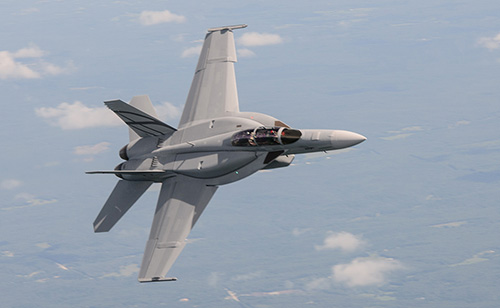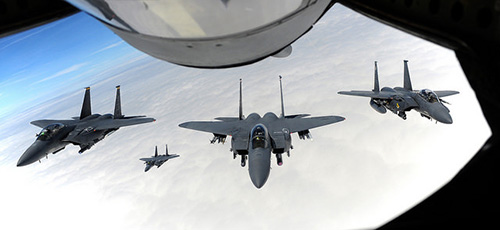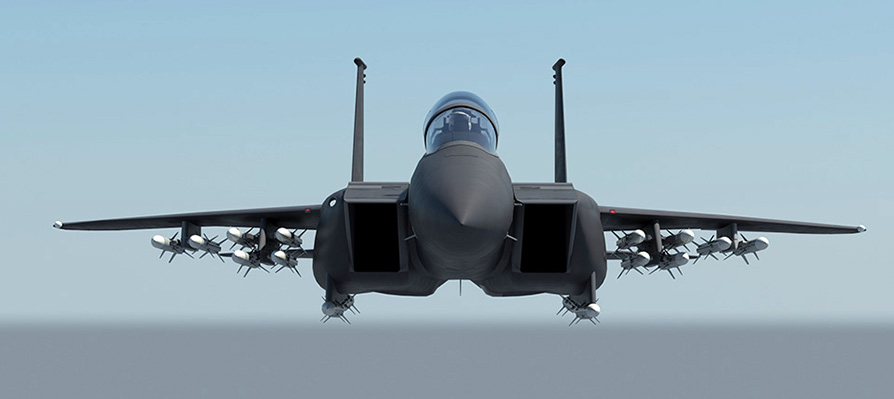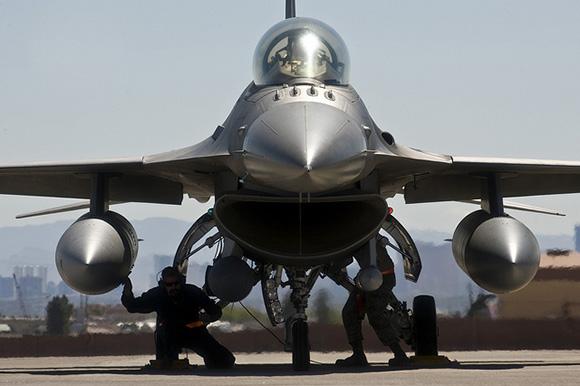The fate of three American icons, the F-16 Fighting Falcon (photo opening), the Boeing F / A-18 Hornet and the F-15 Eagle it is in the hands of India and Israel. Born at the end of the 70 years as a low cost F-15 air superiority fighter and the F-14 missile platform Tomcat, F-16 and F-18 have evolved over the years, becoming extremely capable platforms. Suffice it to say that the F / A-18E / F Super Hornet it is a virtually different cell compared to the original project. The F-16, on the other hand, has evolved from dogfighter pure at low cost in multirole hunting.
Despite being loved by pilots, there are still projects that date back to almost 50 years ago: just think that the first flight of the F-16 is dated two February 1972 and the F-35 has already started to supplant the two international market platforms.
The US Navy plans to buy another sixteen Super Hornet, with funds equally divided in the fiscal year 2017 / 2018. From 2019, the Navy will divert funds exclusively for the new F-35C fleet. The Air Force, however, has already undertaken this line for years. Translated means that both aircraft will necessarily have to find international buyers to keep their respective production lines open.
 Hopefully in the Middle East, but to date the talks are deadlocked because of Israeli veto. Frozen supply of thirty F-16E / F Block 61 as well as fleet upgrade Block-60 of the United Arab Emirates. Expressed "concern" for 40 Super Hornet (photo on the right) requested by Kuwait. Lockheed hopes in Pakistan, which has already authorized the purchase of another eight F-16, although the country seems to be ready to sign a contract with the Russians for a new Su-35 line. It looks with interest in Colombia, Bahrain and Indonesia, but it is evident that even if some small orders materialize, they would not be able to keep the production lines open. Hence the need to find a big buyer: India. At stake there is a billionaire order for the supply of 126 new platforms. New Delhi, in fact, must necessarily replace first the MiG-21 still operating between the ranks of the aeronautics. India, however, places a pre-requisite: production en casa of systems. Problem totally irrelevant for Boeing and Lockheed who have expressed a positive opinion in this regard, even if such an agreement must receive the approval of Washington.
Hopefully in the Middle East, but to date the talks are deadlocked because of Israeli veto. Frozen supply of thirty F-16E / F Block 61 as well as fleet upgrade Block-60 of the United Arab Emirates. Expressed "concern" for 40 Super Hornet (photo on the right) requested by Kuwait. Lockheed hopes in Pakistan, which has already authorized the purchase of another eight F-16, although the country seems to be ready to sign a contract with the Russians for a new Su-35 line. It looks with interest in Colombia, Bahrain and Indonesia, but it is evident that even if some small orders materialize, they would not be able to keep the production lines open. Hence the need to find a big buyer: India. At stake there is a billionaire order for the supply of 126 new platforms. New Delhi, in fact, must necessarily replace first the MiG-21 still operating between the ranks of the aeronautics. India, however, places a pre-requisite: production en casa of systems. Problem totally irrelevant for Boeing and Lockheed who have expressed a positive opinion in this regard, even if such an agreement must receive the approval of Washington.
The IAF is based on 33 squadrons. Five are equipped with MiG-21 and five with MiG-27. Six squadrons equipped with Jaguars. The latter, however, are put on the ground waiting for new engines, avionics and upgrades. Eleven squadrons equipped with Su-30MKI air superiority fighter aircraft are built under license (with the gradual withdrawal of the MiG-21 / 27 will increase to fifteen). Three squadrons, finally, of Mirage 2000H and three of MiG-29, currently being retrofitted.
 The fate of the F-15 Eagle is increasingly uncertain (photos on the left and below). Even in this case, the end of the production line of one of the most beloved US fighters ever is in the hands of Israel. The problem arises in the official opposition of Israel against the possible supply of F-15 fighters Silent Eagle to Qatar. Washington has only two alternatives: to act against its most trusted ally in the region and sell the Qatar fighters or increase the billionaire supplies to Israel, allowing Israel to purchase additional F-15I. Finally, if no order arrives at the Boeing facilities in Missouri, the F-15 line will close forever.
The fate of the F-15 Eagle is increasingly uncertain (photos on the left and below). Even in this case, the end of the production line of one of the most beloved US fighters ever is in the hands of Israel. The problem arises in the official opposition of Israel against the possible supply of F-15 fighters Silent Eagle to Qatar. Washington has only two alternatives: to act against its most trusted ally in the region and sell the Qatar fighters or increase the billionaire supplies to Israel, allowing Israel to purchase additional F-15I. Finally, if no order arrives at the Boeing facilities in Missouri, the F-15 line will close forever.
Israeli aviation would be strongly interested in two new F-15I squadrons equipped with AESA radar. Total cost of the operation estimated at ten billion dollars. The ability to sign new agreements with Boeing, however, depends on the final reach of the new US aid package that will be formalized in the coming weeks. It is however only a question of money. If the US were to provide military supplies for 40 billions of dollars (2018 / 2028), Israel will guarantee the investment only for F-35. If, on the other hand, Israel obtains supplies worth 50 billion dollars, then it will be able to buy two more F-15I squadrons and save theEagle. If by July Boeing does not receive orders it will be forced to close the line after 40 years Eagle.
According to Israel, Qatar would support the extreme Sunni Islamic organizations and would directly help Hamas.
 (photo: Boeing / US DoD)
(photo: Boeing / US DoD)












